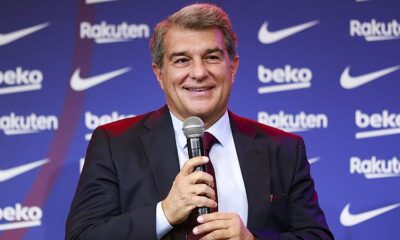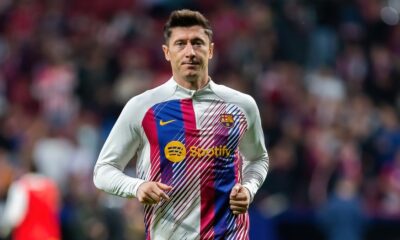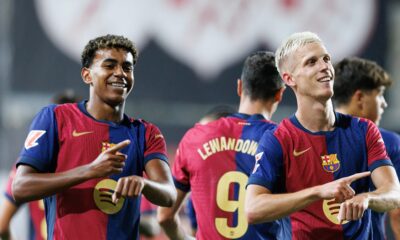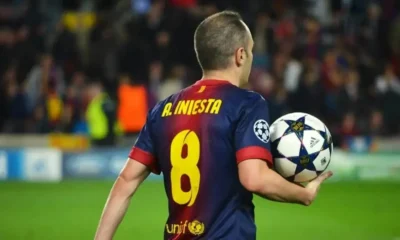Football
Stories of the faithful: 2010 World Cup final hero Andrés Iniesta
There are countless footballers who change club after club throughout their careers and don’t warm up much anywhere. Far fewer are those who spend their entire career, or the most significant part of it, at one club and associate their name so strongly with that jersey that they become a club legend. One of these loyalists is Spain’s World and European champion Andrés Iniesta.
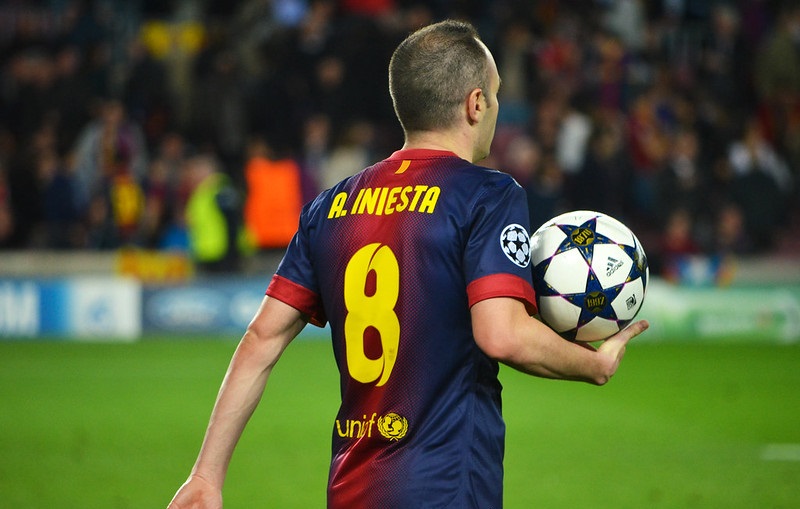
There are countless footballers who change club after club throughout their careers and don’t warm up much anywhere. Far fewer are those who spend their entire career, or the most significant part of it, at one club and associate their name so strongly with that jersey that they become a club legend. One of these loyalists is Spain’s World and European champion Andrés Iniesta.
The small midfielder, born in Fuentalbille, began his footballing journey in Albecete. Like many other football greats, Iniesta did not have an easy start. Coming from a poor family, his father had to save three months’ wages to buy his son his first football boots. Initially, like most children in Brazil, for example, he played more futsal, but as time went on he became more comfortable on grass than indoors.
In Albecete, he soon outclassed his peers by the difference in class and the famous FC Barcelona showed interest. And so, at the age of 12, he moved to the local La Masia academy. When he was 14 he led his Barcelona U15 team as captain in the 1999 Nike Premier Cup tournament.
After an excellent performance not only in the final, where he scored the decisive goal, the then only observer Pep Guardiola confided in Xavi with the now legendary line, “Xavi, you will replace me, but this boy will send us all into retirement.”
He made his debut in an Azulgranas jersey in October 2002, but didn’t firmly establish himself as an A-team player in the squad until the 2004/05 season. Thanks to an injury to teammate Xavi, more space in the squad became available the following season and he blossomed under coach Frank Rijkaard.
In the summer of 2008, when Guardiola took over the first team, Iniesta was named one of Barcelona’s four captains, which only proved how important he was to the entire squad. Under the baton of the former defensive shield of the Catalan outfit, Iniesta shone. Together with Xavi and Busquets, they formed one of the best midfield lines of all time.
The little magician never scored a ton of goals, but when he did, it was worth it. Apart from the decisive goal in the Spanish national team’s jersey in the 2010 World Cup final against the Netherlands, the one against Chelsea in the 2008/09 Champions League semi-final is definitely worth mentioning. Or the beautiful goal against Real Madrid at the Santiago Bernabeu in November 2015, when he collided with Neymar and uncompromisingly drilled the ball into the net.
Iniesta’s strengths were over the top, but arguably a more invisible asset was the art of dribbling, which looked ridiculously simple in his delivery. His versatility, which allowed Pep Guardiola to use him on the left wing, was certainly very useful for the coach.
After all, the use of offensive-minded midfielders on the wing is nothing new on the part of the Spanish pilot. His vision of the game was also impressive. He probably saw football through a different lens than the average mortal.
This, still actively playing, spielmacher was a joy to behold in the blue and red jersey. A player who was even shortlisted for the Ballon d’Or, he captivated the football world and is considered one of the best midfielders to ever grace the football pitch.
He was a joy to play for Barcelona for 16 years, during which time he scored 674 competitive games, 57 goals and 138 assists. Today, he teaches football in a Vissel Kobe jersey in Japan.
Sources

